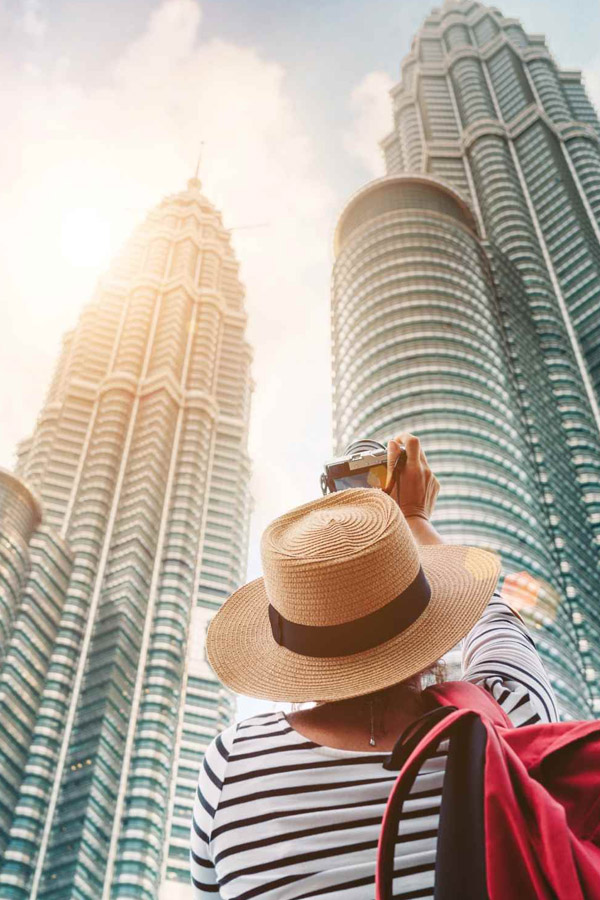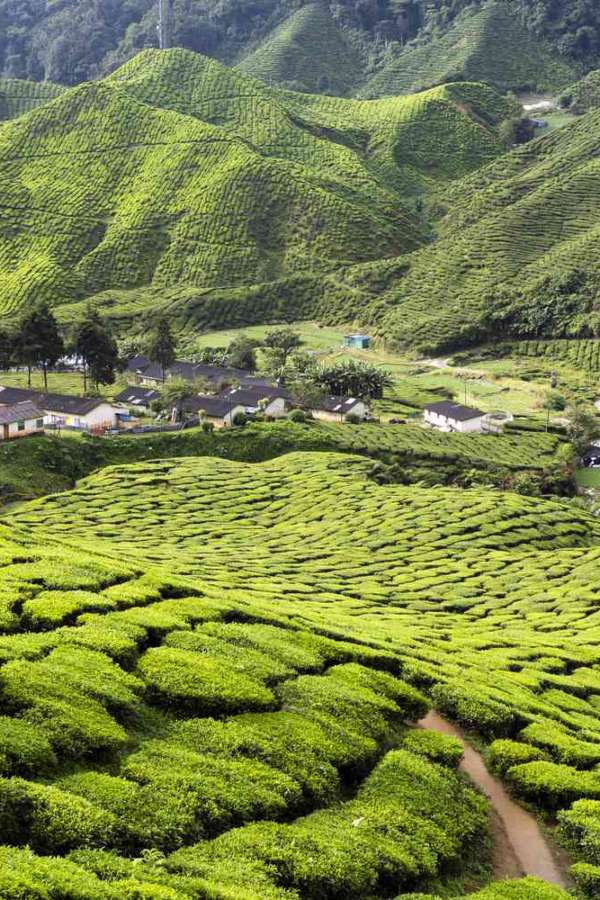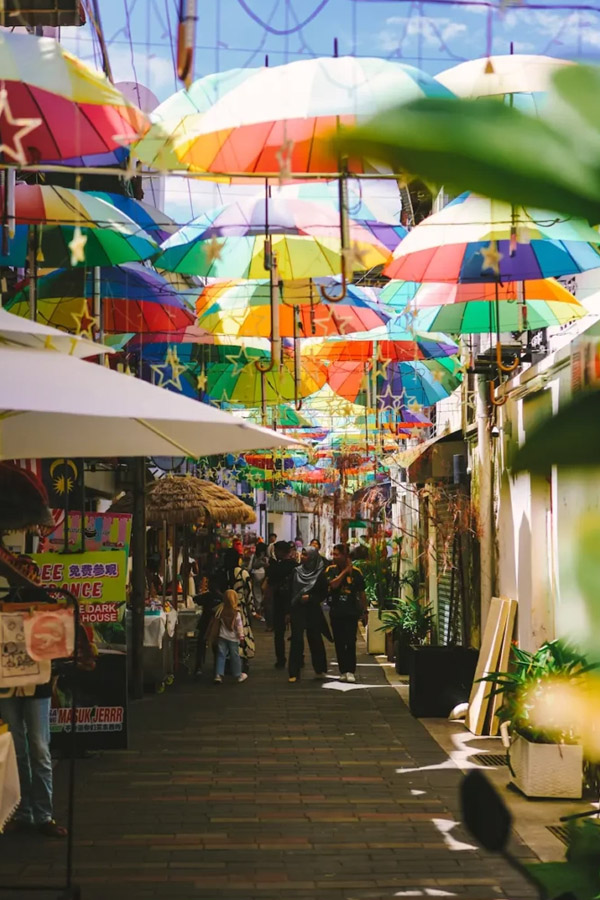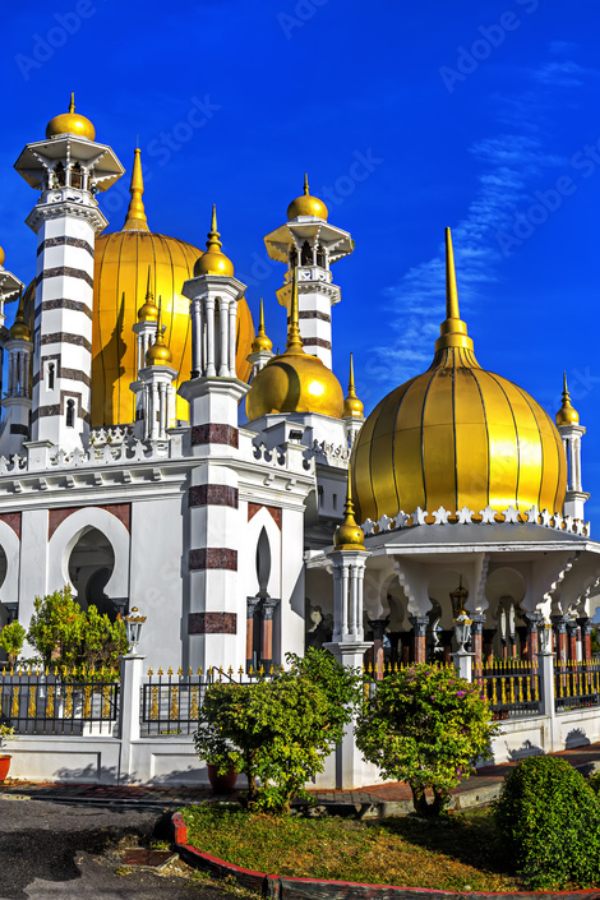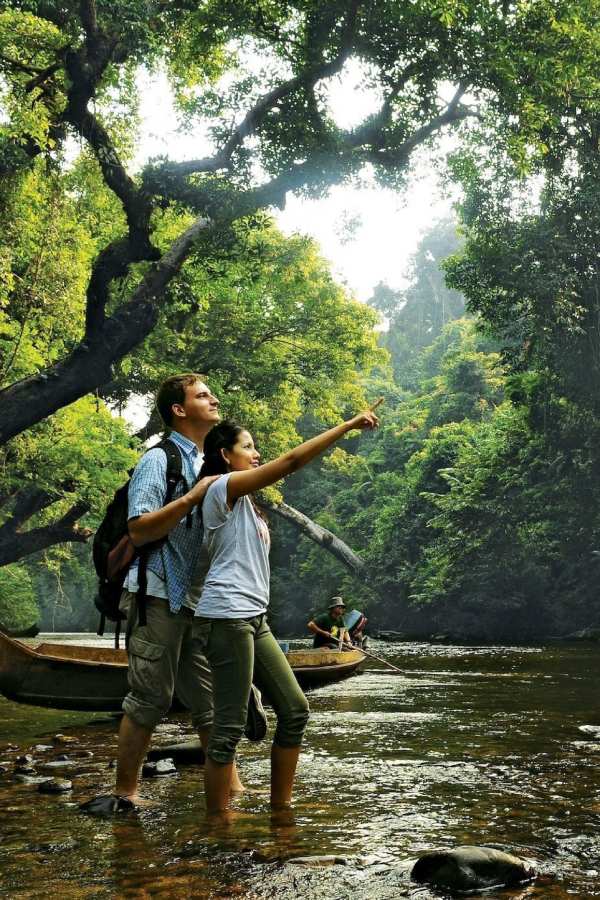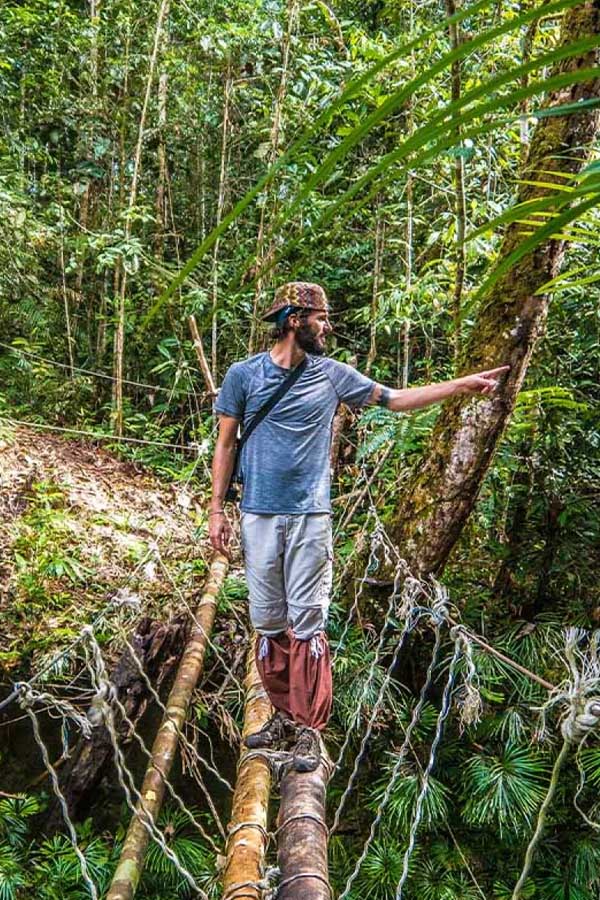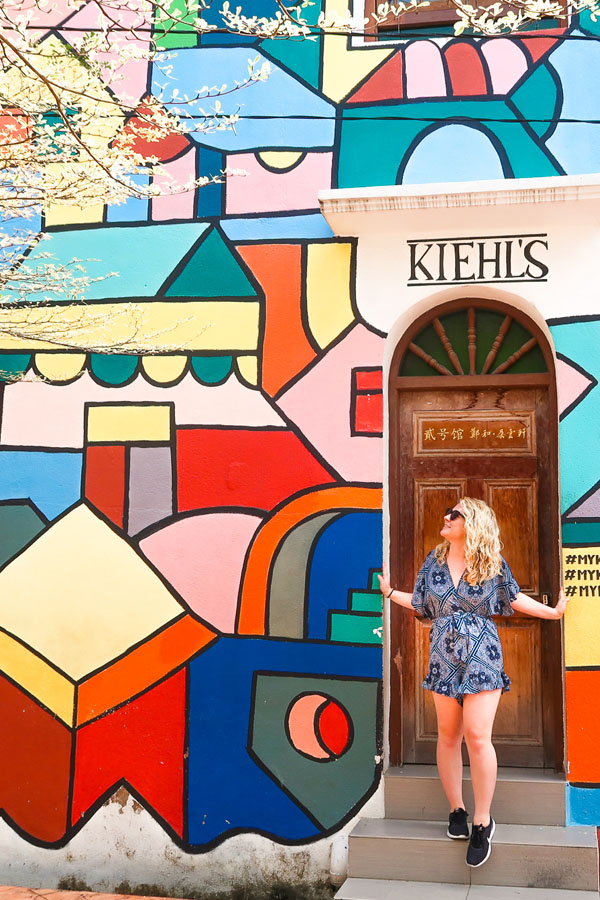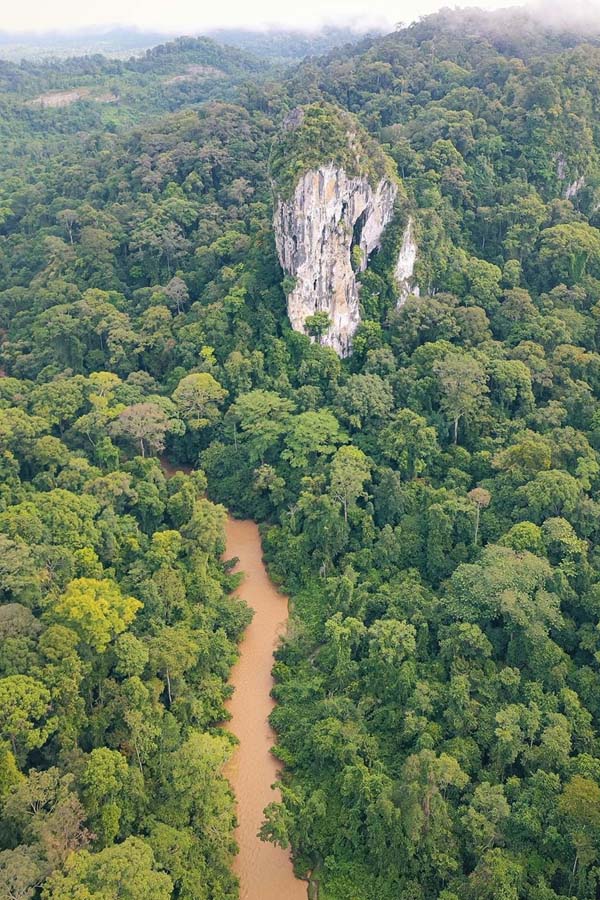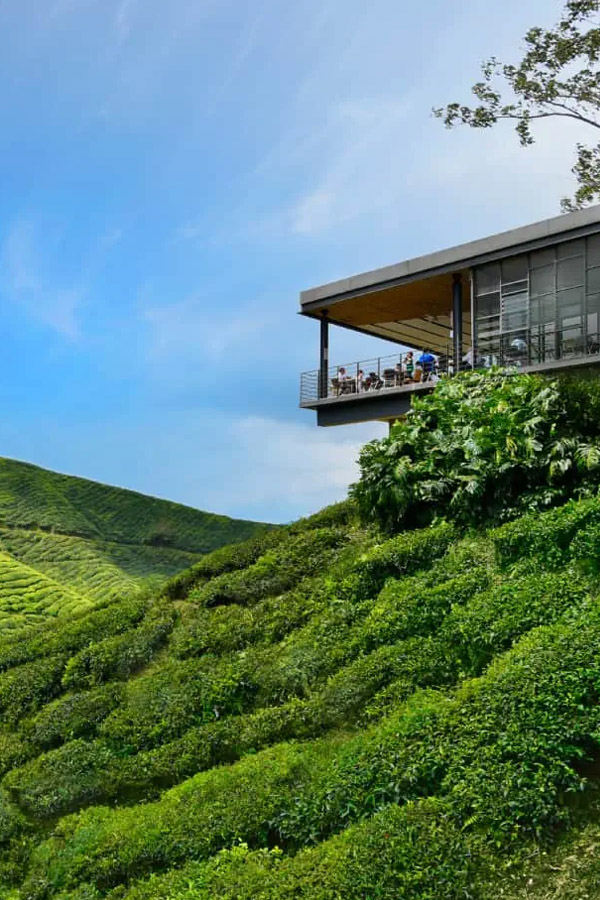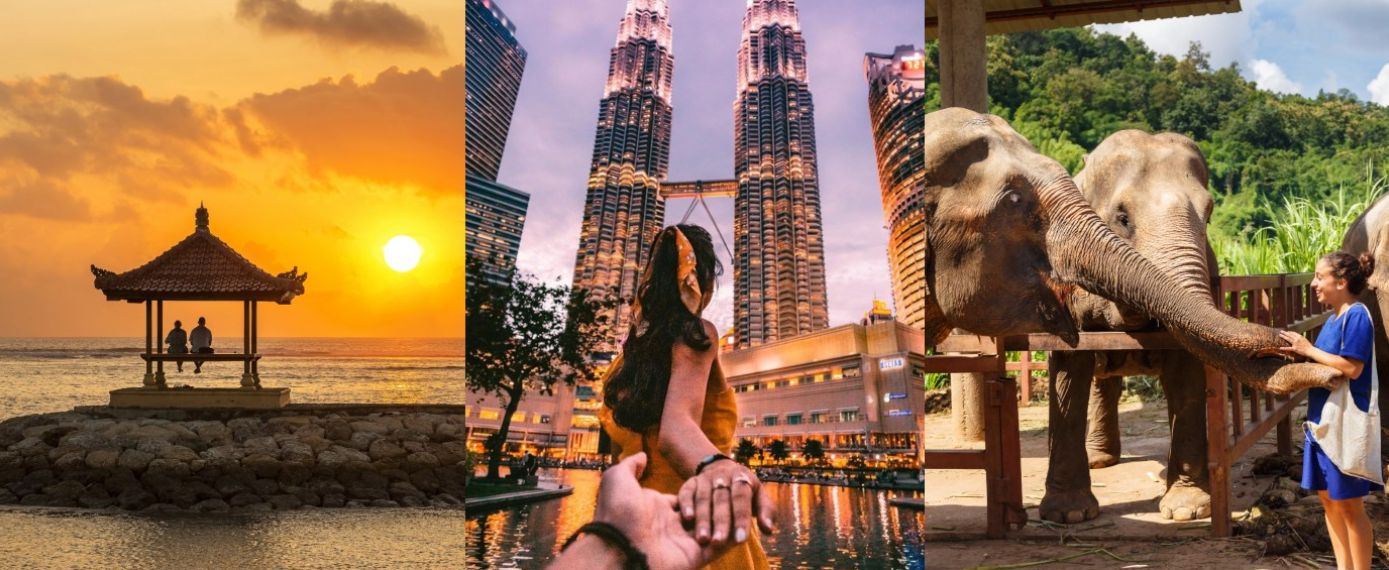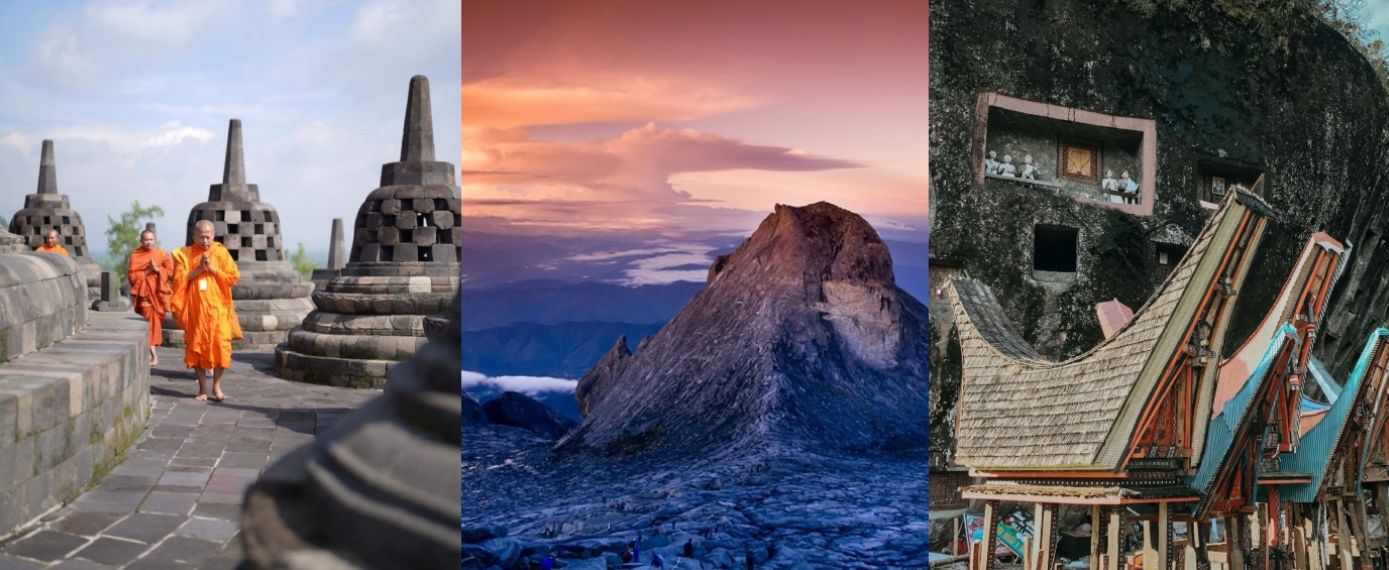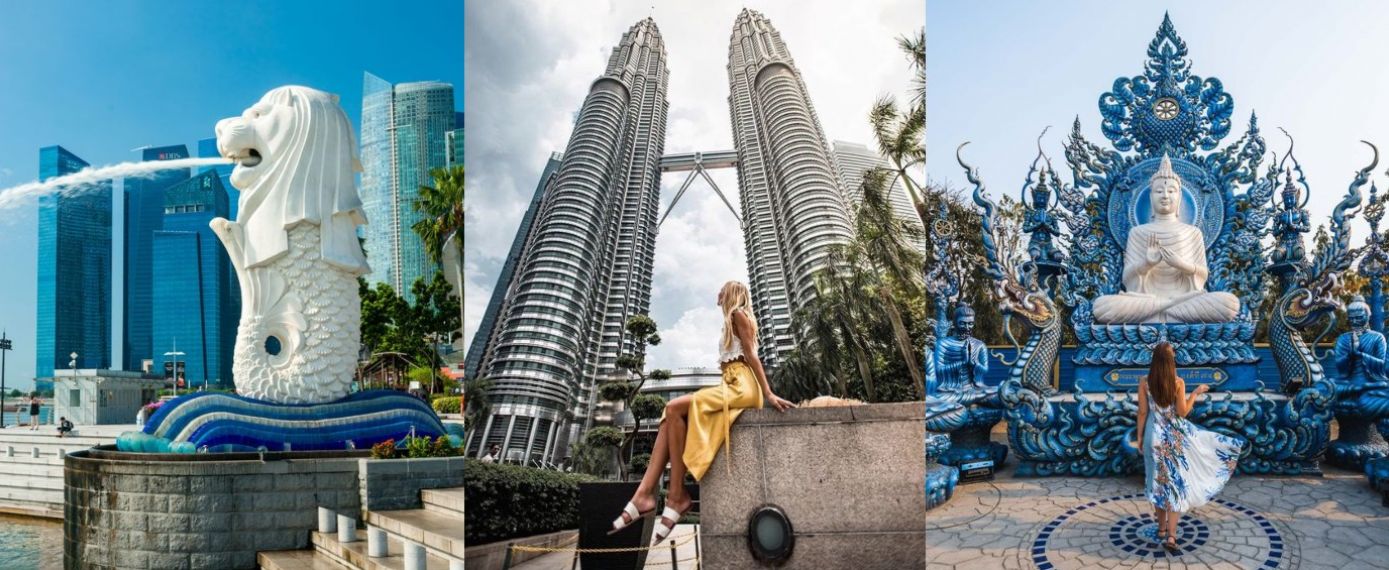
Malaysia's natural beauty is as rich as its cultural heritage, and you’ll enjoy a bit of both on this long 17-day adventure that will take you across two main regions. On the main peninsula, you'll explore the capital of Kuala Lumpur, see the highlights of Penang, and cruise along the primitive jungle of Taman Negara National Park. Then you’ll fly to Borneo, in East Malaysia, and discover deeper in the dense forests and remote villages in Orou Sapulot and Maliau Basin. Prepare for night walks to spot nocturnal wildlife, off-the-beaten trekking trails, and fun camps under the sky night.
Malaysia's natural beauty is as rich as its cultural heritage, and you’ll enjoy a bit of both on this long 17-day adventure that will take you across two main regions. On the main peninsula, you'll explore the capital of Kuala Lumpur, see the highlights of Penang, and cruise along the primitive jungle of Taman Negara National Park. Then you’ll fly to Borneo, in East Malaysia, and discover deeper in the dense forests and remote villages in Orou Sapulot and Maliau Basin. Prepare for night walks to spot nocturnal wildlife, off-the-beaten trekking trails, and fun camps under the sky night.
Highlights of this Tour
Our tour includes
Stay at
Hotel(11 nights)
Read more...Transfers
Travel by private & shared vehicle with driver according to daily schedule
Read more...Local Team
Private guides, drivers, your own travel expert
Read more...Meals
Daily scheduled meals including breakfast at hotel and lunch at local restaurant
Read more...Activities
12 Interesting Experiences
Read more...Services
In-tour offerings including entrance fees, boat trips, in-tour flights...
Read more...Stay at
Hotel(11 nights)
Read more...Transfers
Travel by private & shared vehicle with driver according to daily schedule
Read more...Local Team
Private guides, drivers, your own travel expert
Read more...Meals
Daily scheduled meals including breakfast at hotel and lunch at local restaurant
Read more...Activities
12 Interesting Experiences
Read more...Services
In-tour offerings including entrance fees, boat trips, in-tour flights...
Read more...Trip Overview
Malaysia Ultimate Adventure from West to East - 17 days

Penang
Cameron Highlands
Taman Negara National Park
Kuala Lumpur
Kota Kinabalu
Sabah

With over 15 years of experience, our team will help you choose the perfect for your adventure.

Authentic

Flexible

Persionalized

24/7 Support


Destinations of this tour
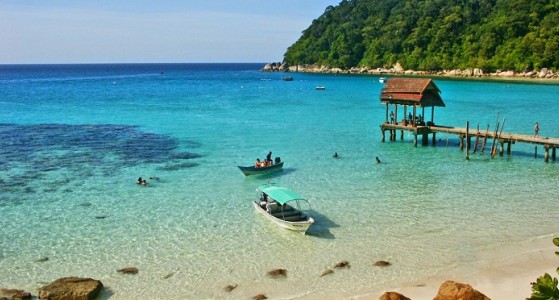
Penang is a state on the west coast of Peninsular Malaysia. Geographically, the state consists of Penang Island, and Seberang Perai, the mainland strip facing the island, which are separated by a small stretch of the Strait of Malacca. Penang is rich in culture and history, with a unique mix of Malay, Chinese, Indian and British influences. Visitors will find Penang brimming with charming historic buildings, ornate religious sites, sandy beaches, kampungs surrounded by rice paddies, vast unbeaten jungles, all topped with a splash of bustling city life. The unique way in which cultures have melded in Penang may be best represented in the food. Frequently voted among Asia’s top locations to eat street food, the blend of Malay, Chinese, Indian and European culinary traditions makes for an unforgettable banquet of taste sensations. Once was a British colonial holding, Penang has an abundance of classical Victorian architecture, particularly in the capital city, Georgetown. History buffs and architecture lovers in particular will appreciate the colonial-era Penang City Hall, Fort Cornwallis and the Penang State Museum. Part of Penang’s charm is that within minutes of admiring colonial architecture you can be wandering among the colorful statues of the Burmese Buddhist Temple or admiring the peaceful geometric patterns of the Kapitan Keling Mosque. Don’t miss the superb Pinang Peranakan Mansion, where the opulent lifestyle enjoyed by the wealthy Chinese Straits families has been recreated with antique furnishings from all over the world. If you enjoy getting back to nature, take a hike in the Penang National Park. Visit the nearby Penang Butterfly Farm for a colorful adventure the entire family will enjoy. And don’t miss the tropical spice garden, one of Malaysia’s premier eco-tourism attractions with more 100 herbs and spices growing wild.
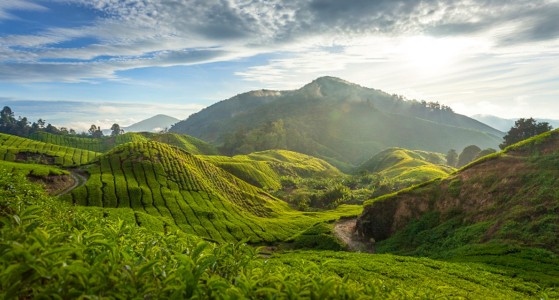
Cameron Highlands is a gorgeous hill station situated in Pahang, Peninsular Malaysia. The area is named after William Cameron, a British government surveyor who discovered the area in 1885 during a mapping expedition. During the colonial occupation era, Cameron Highlands gained fame due to its cool climate, attracting the British for a perfect summer retreat. Consequently, this hill station retains a quintessentially old English atmosphere with mock Tudor hotels serving tea in the afternoon and gin and tonics in the evenings. Cameron Highlands is well known for interesting hiking trails that are well kept, making things very easy experts and beginners alike. One of the most popular is the mystical Mossy Forest, the oldest forest in the area. It is known for the convoluted trees covered in moss that gives it an enchanted forest look. The paths have been mostly covered by wooden bridges making it quite an easy trek. For adventure lovers, there is a network of jungle trails taking in most of the major attractions and when combined with the roads will allow you to walk through most of the best areas from town to town. Most of the trails start, end, or can be combined with other trails to bring you to and from Tanah Rata. Cameron Highlands is also home to numerous agricultural farms where visitors can obtain fresher-than-fresh produce. One can visit a sweet-smelling strawberry plantation, a sprawling tea estate, or a prickly cactus farm for sightseeing.
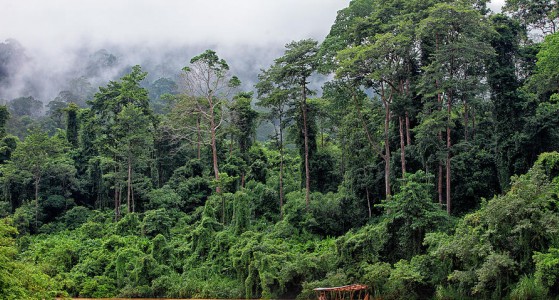
Taman Negara in Malay language is for 'national park' and is the largest one in Peninsular Malaysia. It is famous for its tropical rainforest and diverse wildlife such as monkeys, gibbons, elephants, panthers, sun bears, plus hundreds of species of birds and insects. As one of the oldest rainforests on earth with an estimated age of at least 130 million years, Taman Negara is home to thousands of endangered flora and fauna that you might only see in school textbooks and Zoo Negara, along with a group of Orang Asli tribes, the indigenous people who live a nomadic lifestyle inside the jungle. Taman Negara National Park is the perfect place if you love rainforest. Its natural tourist attractions lend themselves perfectly to a myriad of fun and exhilarating outdoor activities, each more daring and adventurous than the last. The most famous attraction in the park the stunning Canopy Walkway which is conveniently located close to the park headquarters. This has the claim to fame of being the longest suspension bridge in Malaysia and spans some 530 meters. The canopy stands at a height of 25 meters but also rises to 40 meters in height in certain areas. With so much lush rainforest and tropical fauna and flora on show, it is no doubt that one of the most popular activities in Taman Negara is jungle trekking. Although you need to be reasonably fit and healthy to undertake the longer treks, they really are worth doing, as you will get to see so much more of the jungle and its incredible scenery and wildlife. Among the most popular trails are Chegar Anjing, Lata Berkoh, and Kuala Terengganu, as well as the trek to Gunung Tahan. These take around a couple of days to a week to complete. You can choose the appropriate hike for you, depending on how long you have to spend in the park. Apart from trekking, there are still plenty of activities to do at Taman Negara such as boat rides, rapid shooting, animal observation, fishing, cave exploration... since the park is a top-rated ecotourism destination with a wealth of experience.
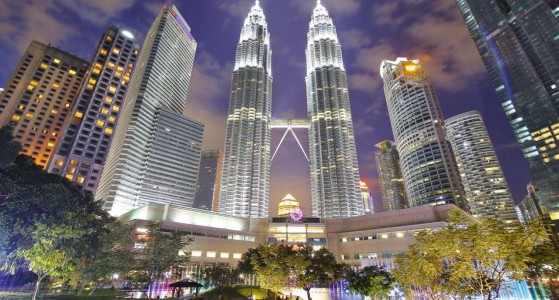
Kuala Lumpur is a diversity cultural melting pot, where jade-topped Chinese gates open out onto palm-lined squares, Indian restaurants serve banana leaf curries in marigold-scented alleyways, and old-fashioned Malay villages lie squeezed between the skyscrapers. Founded in 1857 under British rule as a tin mining outpost, Kuala Lumpur is fairly new as far as Malaysian cities go and does not have the rich history like Georgetown or Malacca. After a couple of decades of fluctuation, Kuala Lumpur began to prosper and was made capital of the Federated Malay States in 1896. Today, Kuala Lumpur is the capital of one of the economic powerhouses of Asia. Kuala Lumpurites come in all sorts. Malaysian and Chinese make up 80 percent of the population, and about 7 percent are Indians. Among the rest are offspring of intermarriages between races. Most Kuala Lumpurites speak at least two languages, one of which is Malay, or Bahasa Malaysia, the national language; some speak up to five – including Chinese and Indian dialects.

Melaka, or Malacca as it is previously known, is one of the most important port cities in the history of world trade. As a UNESCO World Heritage Site declared in 2008, Melaka showcases a fusion of Asian and European influences. It is also a perfect example of the perfect mix of different cultures and religions in Southeast Asia. Melaka’s history started as an independent sultanate. Later on, the Portuguese conquered it during its explorations in the 16th century. Some signs of Portuguese occupation still remain. After that, it became part of the Dutch empire. Most of the colonial buildings in the city came from that period. Situated in the Malacca Strait that connects the South Asian Sea and Europe to the East, the city was once the seat of the Malay Kingdom and has gone through several periods of prosperity as well as neglect. The city now offers a blend of cultural heritage, vibrant street art, and mouthwatering cuisine. It is well known for its colonial architecture, unique Nyonya traditions and colorful old town. For a visit, the historic city of Melaka is divided into two core zones on either side of the Melaka River. The first is St Paul's Hill Civic Zone with a number of government buildings, museums, churches, urban squares and the original fortress town from the 16th century Portuguese and Dutch periods. The second, on the other side of the river, is the Historic Residential and Commercial Zone, with more than 600 shophouses, commercial and residential buildings, religious buildings and tombs. A visit on foot along the old streets of Melaka past its ruins reflecting the rich history of hundreds of years of Asian and European influence, that will showcase Melaka's cosmopolitan journey over the centuries.
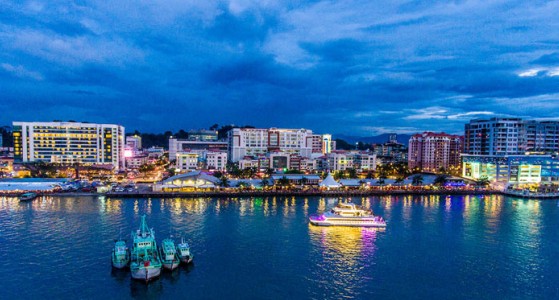
Kota Kinabalu is a small city located in Malaysian part of Borneo. Its coastal location and mountain backdrop give it one of the most spectacular settings of any city in the country. As a growing tourist destination, Kota Kinabalu offers wide array of beautiful attractions over the city, powdery-white sand beaches, tropical rain forests, historical sites, amazing landscapes and its main jewel, the Mount Kinabalu. Surrounded by a wild and rugged national park of the same name, Mount Kinabalu stretches dramatically towards the heavens from amid the enormous Crocker Range that dominates Borneo’s skyline. Standing at 4,095 meters, the Malay Archipelago’s highest mountain is very popular with both hikers and rock climbers. It is said to be one of the easiest mountains in the world to summit, as no climbing equipment or special skills are required. Mount Kinabalu is also one of the most biodiverse places on Earth with thousands of fauna and flora species, including orchids and the carnivorous pitcher plant; more than 300 species of bird and over 100 mammal species. It was declared a World Heritage Site by UNESCO in December 2000 for its outstanding universal values. Located 3km away from Kota Kinabalu, the Tunku Abdul Rahman Park is a state park situated in Gaya Bay, home to five stunning islands namely Gaya Island, Sapi Island, Manukan Island, Mamutik Island, and Sulug Island. Each island is unique in its own way; all offer excellent diving, snorkeling, and sunbathing opportunities. Besides exploring its underwater wonders, one can go on a hike through the dense jungle that blankets the islands, or relax and lounge on one of its many gorgeous sandy beaches.
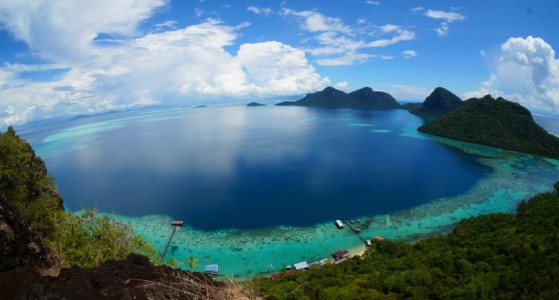
Have you known that Sabah – The Malaysian state is not only renowned for its pristine natural environment, exotic wildlife, staggering mountain ranges but also white sandy beaches, unique cultures and more? In our Sabah tours collection, you will get the chance to enjoy the beauty of Sabah. Whether it is exploring the mystic rainforests, climbing the breathtaking Mount Kinabalu or diving Sipadan, you will find a perfect itinerary which suits you best.
OTHER TOURS YOU MAY LIKE
Join us on an unforgettable 18-day Signature Journey through the heart of Southeast Asia, from the vibrant streets of Bangkok to the cultural treasures of Chiang Mai, the sleek charm of Kuala Lumpur, and the island magic of Bali. Wander through lush jungles, ancient temples, seaside villages, and volcanic landscapes as we explore Ubud, Kintamani, Candidasa, Amed, Lovina, and Sanur. This is more than a holiday - it’s a journey filled with flavors, colors, and cherished moments. Ready to discover paradise?
Only From $3996/person
All Inclusive ServiceThis Tour
As the name suggests, this 26-day package is a rich tapestry of myth, culture, and breathtaking scenery across Indonesia and Malaysia. Delve into the heart of Javanese tradition in Yogyakarta and the ancestral rituals in the highlands of Tana Toraja. Discover the wild edge of Borneo in Balikpapan, the modern pulse of Kuala Lumpur, the colonial charm of Melaka, and the heritage-laden streets of Kuching. Finally, bask in the natural beauty of Kota Kinabalu, where mountain and sea meet in perfect harmony. Each stop tells a story, and every landscape holds a legend.
Only From $7487/person
All Inclusive ServiceThis Tour
This 12-day travel package explores the rich history and distinct cultural blend of three magnificent countries: Singapore, Malaysia, and Thailand. It is a truly remarkable adventure that combines a traditional itinerary with active local encounters. Designed specifically for dynamic enthusiasts, the trip includes a list of significant destinations where everyone can get a slice of each country's highlighted spots and local life, as well as an extra series of outdoor activities for adventurers such as taking a bungy jump, short trekking through tropical jungle with elephants, and pleasant walking tours in quaint and heritage corners. For further details, please see our recommended tailored schedule below.
Only From $3048/person
All Inclusive ServiceThis Tour

Customize this tour with us!


Adventure Travel Trade Association


American Society of Travel Agents


Family Travel Association


TripAdvisor


The guardian


World Travel Awards
ABOUT US
Why Us Trusted Travel Company What Makes Us Different Meet Our Team Southeast Asia Travel Guide Southeast Asia Tour Highlights Pre-departures Deposit & Payment Cancellation Policy Terms and Conditions Contact UsOur Destinations
Vietnam Tours Cambodia Tours Thailand Tours Indonesia Tours Malaysia Tours Philippines Tours Laos Tours Singapore Tours Myanmar ToursMulti-country
Vietnam Cambodia Tours Vietnam Cambodia Laos Tours Vietnam Thailand Tours Vietnam Cambodia Thailand Tours Thailand Malaysia Tours Thailand Malaysia Indonesia Tours Indonesia Thailand Tours Indonesia Malaysia Vietnam Tours Southeast Asia Tours 26 - 30 Days Southeast Asia Tours 18 - 26 Days Southeast Asia Tours 12 - 18 DaysTravel Themes
Best Southeast Asia Tours Southeast Asia Heritage & Culture Tours Southeast Asia Nature & Wildlife Tours Southeast Asia Family Tours Southeast Asia Honeymoon Tours Southeast Asia Adventure & Outdoor Tours Southeast Asia Beach & Island Tours Southeast Asia Cruise Tours Southeast Asia Tours 8 - 12 Days Southeast Asia Tours < 8 DaysSOUTHEAST ASIA TRAVEL COMPANY LIMITED
As local Southeast Asia Tour experts with over 15 years of experience, Southeast Asia Travel company has built a solid reputation as experts in designing custom tours across Southeast Asia including Vietnam, Laos, Cambodia, Thailand, Singapore, Malaysia, Indonesia, Myanmar, Philippines... Every Southeast Asia tour we offer is exclusively private, ensuring flexibility to suit individual preferences.
Read more
